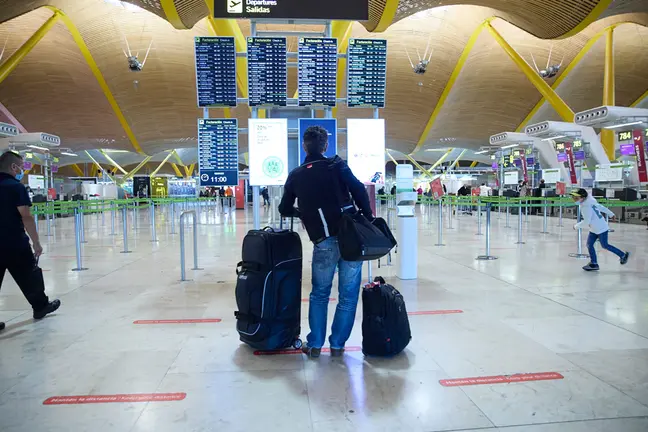Finland begins to see the light at the end of the tunnel of the coronavirus pandemic, with fewer cases and declining incidence.
The number of new Covid-19 cases in the 5.5 million country dropped before Easter, and this downward trend continues, though the number of new cases remains high, amounting to over 3,000 per week.
The Ministry of Social Affairs and Health and the National Institute of Health and Welfare (THL) published their latest monitoring report on the epidemic on Thursday.
The weekly assessment shows that between 29 March and 4 April, about 3400 new cases were reported to the communicable diseases register, showing a decrease of nearly 1000 from the previous week.
The incidence of new cases was 58 per 100,000 inhabitants, while in the previous week it was 75.
The total number of new cases in the last two-week period was more than 7,350, which was around 2,250 cases fewer than in the preceding two weeks. The incidence of new cases was 133 per 100,000 inhabitants, while in the preceding two-week period it was 174.
Still, there are major regional differences in the development of the epidemic. Southern Finland is still the worst affected area.
Over the past two weeks, the incidence has been highest in the hospital districts of Helsinki and Uusimaa and Southwest Finland (Turku region). The incidence is lowest in South Ostrobothnia, North Ostrobothnia, Kainuu, Länsi-Pohja and Lapland.
Reopening
In light of these encouraging data, the government and the parliamentary political parties are currently negotiating the conditions for the reopening. The government has prepared a preliminary plan to gradually ease the restrictions from 18 April, the date on which the closure obligation imposed on bars and restaurants expires.
Kun puhumme suunnitelmasta rajoitusten purkamisesta, on kyse siitä, miten hallitusti, asteittain ja tautitilanteen salliessa voimme purkaa rajoituksia seuraavien kuukausien aikana. Kyse on näkymästä, ei siitä, että juuri nyt, tänään ja tässä purkaisimme rajoituksia.
— Sanna Marin (@MarinSanna) April 8, 2021
However, the government wants to be cautious. Prime Minister Sanna Marin said on Twitter that the removal of the restrictions will be a gradual process, to be developed in a controlled manner during the next few months depending on how the epidemic evolves in the country.
Tautitilanne on vielä huolestuttava. Monilla alueilla tapausluvut ja ilmaantuvuus ovat korkealla tasolla, eikä rajoituksia pidä ennenaikaisesti purkaa. Nyt tarvitaan malttia pitää kiinni rajoituksista, jotta niitä voidaan myös purkaa tauti- ja rokotustilanteen parantuessa.
— Sanna Marin (@MarinSanna) April 8, 2021
Marin also insisted that the epidemiological situation continues to be "worrying" in some areas, so it is still necessary to comply with the restrictions.
"The current restrictions and recommendations and the closure of businesses serving food or beverages have clearly had an impact. The positive trend can be maintained by continuing with the restrictions, and they should not be dismantled too early or too quickly," the Ministry of Health and THL emphasized.
Hospital care
Despite the positive trend, health officials stressed that in March there was a considerable increase in the need for hospital care.
The number of Covid-19 patients in intensive care peaked at 64 on 23 March. Since then, the number has decreased.
Patient numbers in other hospital care have also dropped: on Thursday 8 April there were 42 patients in intensive care, 57 in primary care and 136 in specialised care.
THL reported on Thursday 426 new infections and 4 deaths. The total number of deaths related to the disease was 866.










